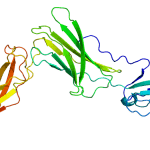
By Annie Keller
Published July 28, 2020
The coronavirus disease (COVID-19) pandemic is truly a global one; no country has been unaffected. In a recent study published in the Global Journal on Quality and Safety in Healthcare (JQSH) , Laila Abu Esba and colleagues from the Ministry of National Guard Health Affairs (MNGHA) in Saudi Arabia detail how the country has been handling the crisis. The Pharmacy and Therapeutics (P&T) committee from there has been responsible for providing guidelines for how to handle the COVID-19 pandemic.
The committee’s plan is a multipart one. First, the committee went through all studies in the PubMed database that highlighted either COVID-19 itself or any potential treatment options. Those studies were then categorized into three subsets: actual human trials, studies simply done on the virus itself, and articles that simply discussed treatments in theory. At the time of their analysis, there were 20 studies found; 14 were from the first category, two from the second, and four from the third. After a thorough review and consideration, several drugs were recommended to be kept in good stock: chloroquine, hydroxychloroquine + azithromycin, lopinavir / ritonavir, oseltamivir, and ribavirin. At the time, few of these drugs were being used in a clinical basis.
The committee also recognized that one of the most challenging problems during the initial outbreak was low supply of many essential drugs. As a result, they coordinated with the pharmaceutical planning department to make sure that adequate supplies of drugs anticipated to increase in demand would be well secured and stocked.
The third part of the plan involved estimating the potential number of patients even before there was a spike in cases. They reviewed different models to make a local prediction. Both the model and factors such as global reports that 20% of cases would be severe enough to require intensive care were used, and the authors planned accordingly.
The committee summarized their recommendations at the time of their study in the JQSH article as follows:
- Increase existing stocks of the following drugs: lopinavir / ritonavir, chloroquine, ribavirin, hydroxychloroquine, azithromycin, and oseltamivir.
- To estimate the number of patients that would require antiviral drugs based on the local number of affected cases, predictions using other countries’ trends, and an estimation of 20% of cases being moderate to severe, and to review this decision periodically based on the trend of actual number of cases.
- All listed potential treatments should be secured in controlled area in the pharmacy to control the stock and restricted in the electronic healthcare system.
- Increase supply of all supportive treatments as follows:
- Fluids: crystalloids (normal saline and Ringer’s lactate) and electrolytes
- Vasopressors (ie, norepinephrine, epinephrine, vasopressin, and dopamine)
- Low-molecular-weight heparin and heparin
- Proton-pump inhibitors
- Sedatives
- Albumin
- Neuromuscular blockade (eg cisatracurium)
- Corticosteroids
- To develop an antiviral protocol for COVID-19 treatment, to include patient criteria for treatment and recommended doses
- Daily stock monitoring of the potential treatments listed.
By pre-planning and with daily updates, the committee was able to create an action plan in a timely manner to proactively secure a well-stocked inventory of drugs that would be required for treating patients. The plan can serve as a model for other healthcare organizations dealing with COVID-19 and future pandemics in other parts of the world.
This picture is licensed under the Creative Commons Attribution 2.0 Generic license.

 Previous Post
Previous Post Next Post
Next Post